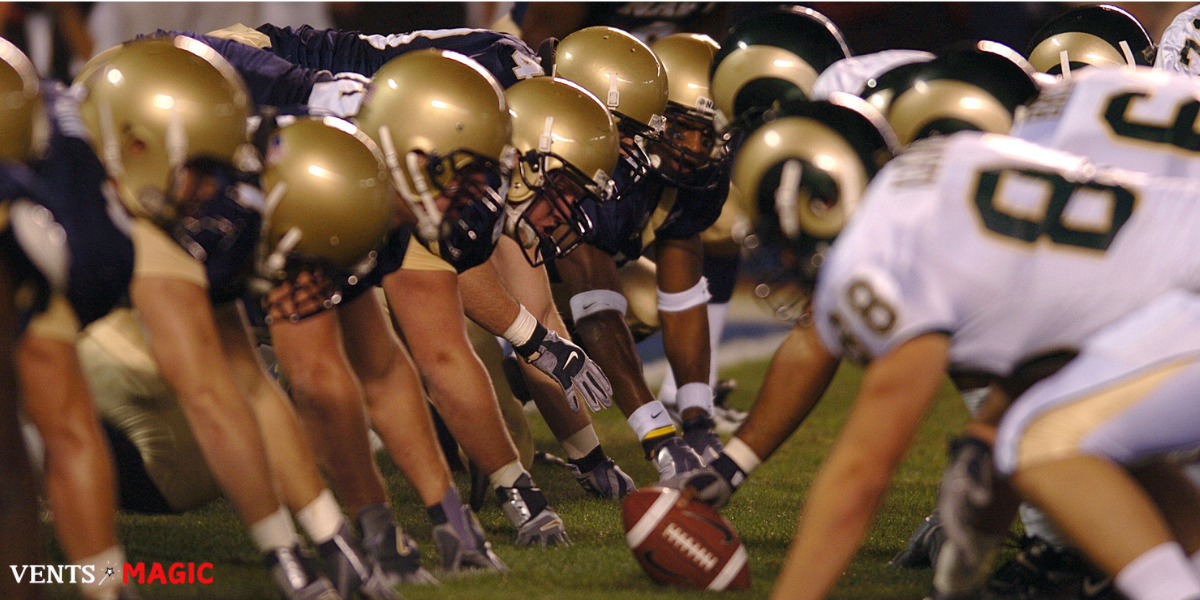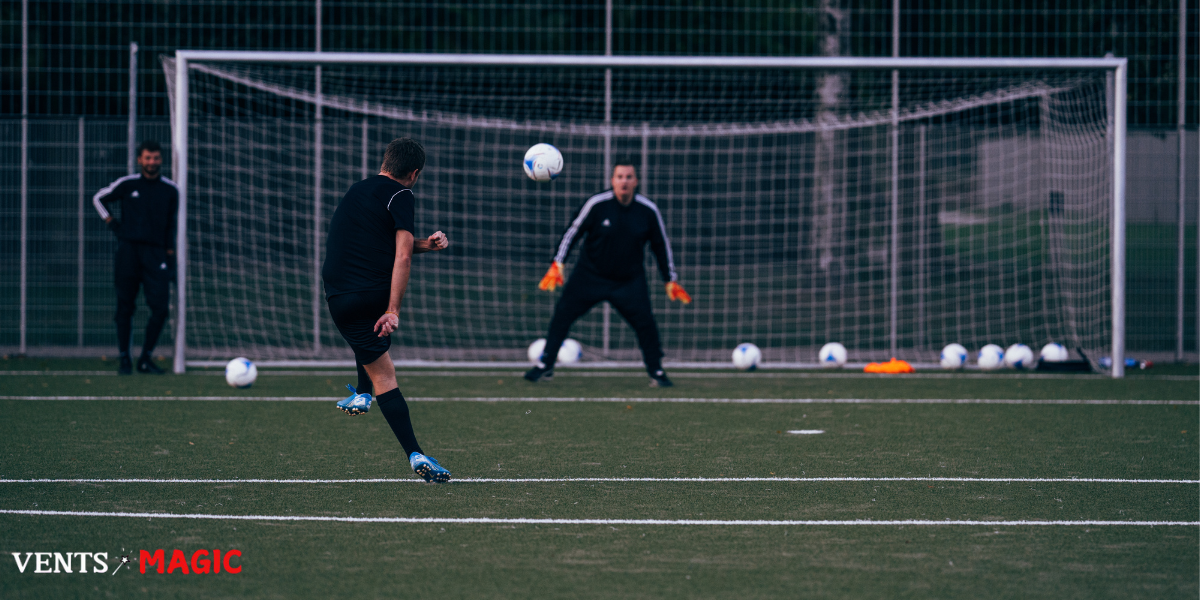Post Touchdown Attempt: An In-Depth Exploration
Football is one of the most thrilling sports, capturing the hearts of millions worldwide. Its action-packed gameplay keeps fans on the edge of their seats, and one of the crucial aspects that often decides the outcome of a game is the post-touchdown attempt. While touchdowns themselves bring the most excitement, the significance of what happens afterward known as the post-touchdown attempt cannot be overstated.
We’ll explore the details of post-touchdown attempts, including their definitions, different types, and impact on the game. Whether you are new to football or a seasoned fan, this comprehensive guide will help you gain a deeper understanding of this critical aspect of the sport.
Also read:
What is a Post Touchdown Attempt?
A post-touchdown attempt (commonly abbreviated as PAT in football) is the play that occurs immediately after a team scores a touchdown. It allows the scoring team to earn additional points, enhancing their score. Both options have their own rules, strategies, and risks, which makes understanding them essential for appreciating the intricacies of the game. The extra point in football and the two-point conversion not only affect the scoreboard but also influence the game’s momentum, strategies, and outcomes.
Types of Post-Touchdown Attempts
There are primarily two types of post-touchdown attempts in American football:
- Extra Point (Point After Touchdown – PAT)
- Two-Point Conversion
1. Extra Point (Point After Touchdown – PAT)
The extra point, also called the point after touchdown (PAT), is the most common type of post-touchdown attempt. The team attempts to kick the ball through the goalposts from the 15-yard line, a distance that totals approximately 33 yards when you include the end zone. If successful, the team earns an additional point, bringing the total to seven points for that touchdown.
- Success Rate: According to recent NFL statistics, extra points have a high success rate, hovering around 93-95%. The consistency of professional kickers often makes this the preferred choice when a team wants to add a guaranteed point.
- Strategy: Coaches usually opt for the extra point when they want to play it safe, especially when the game is close or when they already have a substantial lead. The extra point ensures a steady accumulation of points without significant risk.
2. Two-Point Conversion
A two-point conversion is a riskier play that offers the chance for the team to add two points instead of one. The offense lines up at the opponent’s 2-yard line and attempts to score by either passing or running the ball into the end zone.
- Success Rate: The success rate of a two-point conversion is much lower than that of an extra point, averaging around 47-50% in recent NFL seasons. This lower rate is due to the increased difficulty of scoring from the 2-yard line against a prepared defense.
- Strategy: Teams typically opt for a two-point conversion in situations where they need to make up points quickly or when the extra point alone wouldn’t make a significant difference in the game’s outcome. For example, a team trailing by two points may attempt a two-point conversion to tie the game rather than kicking the extra point.
How to Decide Between an Extra Point and a Two-Point Conversion?
Deciding between an extra point and a two-point conversion requires a combination of strategic planning, mathematical analysis, and game-time instincts. Coaches must weigh the risks and benefits based on various factors:
Game Score
If a team is leading by a small margin, they may prefer the safer option of the extra point. Conversely, if they are trailing by one or two points, a two-point conversion could help tie the game or gain the lead.
Time Remaining
The amount of time left in the game significantly influences the decision. Late in the fourth quarter, when the game is on the line, teams are more likely to attempt two-point conversions to close a score gap.
Team Strengths
A team with a strong running back or a mobile quarterback may be more confident in their ability to score two points. On the other hand, teams with reliable kickers usually stick with the extra point to avoid unnecessary risks.
Opponent’s Defense
If the opposing team has a strong defensive line, the risk of attempting a two-point conversion increases. In such cases, coaches often go with the extra point to secure the additional score.

The Role of Analytics in Post-Touchdown Attempts
In the modern era of football, analytics play an increasingly important role in determining when to attempt a two-point conversion versus an extra point. Coaches and analysts use real-time data to make decisions that maximize a team’s chances of winning. Several factors are considered:
Historical Data
Teams analyze historical data on success rates for both extra points and two-point conversions, factoring in variables like weather conditions, the specific location of the game, and the kicking abilities of their players.
Game Flow Analysis
Analyzing the flow of the game, such as the momentum of their offense or how well their defense is performing, helps teams decide whether to take the risk for an additional point or play it safe.
Opponent Analysis
Teams also evaluate their opponents’ tendencies. For instance, if the opposing team has shown weaknesses in defending against running plays near the end zone, a two-point conversion attempt may be more likely to succeed.
The Impact of Rule Changes on Post-Touchdown Attempts
In recent years, the NFL has made rule changes that have significantly impacted the strategy surrounding post-touchdown attempts.
Extra Point Distance Change
In 2015, the NFL moved the spot for extra point attempts from the 2-yard line to the 15-yard line, increasing the kick distance to approximately 33 yards. This change aimed to make the PAT more challenging and to encourage teams to consider the two-point conversion as a viable alternative.
- Effect on PAT Success Rates: Since the rule change, success rates for extra points have dropped slightly, from around 99% to 93-95%. This decline has added an element of uncertainty to what was once considered almost automatic.
- Increased Two-Point Attempts: The increased difficulty of extra points has led to more teams opting for two-point conversions. In recent seasons, the average number of two-point attempts per game has risen, reflecting teams’ willingness to take calculated risks.
Real-Life Scenarios and Outcomes
Understanding the significance of post-touchdown attempts becomes easier when we examine real-life scenarios. Let’s look at some examples from the NFL to see how these plays can influence game outcomes.
The 2019 Super Bowl
In the 2019 Super Bowl, the New England Patriots were leading the Los Angeles Rams by a score of 10-3 late in the third quarter. When they scored another touchdown, they chose to attempt the extra point instead of going for two. The strategy was to extend their lead to eight points, forcing the Rams to score twice (a touchdown and a two-point conversion) to tie the game. This strategic decision played a key role in the Patriots’ eventual victory.
The 2021 Regular Season
During a 2021 regular-season game between the Baltimore Ravens and the Cleveland Browns, the Ravens opted for a two-point conversion after scoring a late touchdown while trailing by one point. Though they failed to convert, the decision was based on their analytics showing a higher win probability if they secured the lead rather than relying on overtime. This example demonstrates the balance between risk and reward in post-touchdown decisions.
Factors Influencing a Successful Post-Touchdown Attempt
Several factors can influence the outcome of a post-touchdown attempt, whether it’s a PAT or a two-point conversion:
- Weather Conditions: Wind, rain, or snow can affect the trajectory of the ball during a kick, making PATs more difficult. Similarly, wet or slippery conditions can make two-point conversions challenging.
- Player Skill Level: The skills of the kicker, quarterback, and offensive line play crucial roles. A reliable kicker increases PAT success rates, while a mobile quarterback or powerful running back boosts two-point conversion odds.
- Crowd Noise: In high-stakes games, crowd noise can disrupt communication and focus, affecting both kick attempts and two-point conversions. Teams playing away may find it harder to execute these plays smoothly.
Conclusion: Post Touchdown Attempt
The post-touchdown attempt plays a critical role in football, shaping the dynamics and outcomes of games. Whether it’s the routine extra point kick or the high-stakes two-point conversion, these moments can turn the tide of a match and often make for the most thrilling plays in a game.
Understanding the rules, strategies, and implications behind these attempts not only enhances your appreciation for football but also offers deeper insight into the decisions that coaches and players face. Next time you watch a game, pay close attention to the post-touchdown attempts—they might just be the difference between victory and defeat.
FAQs: Post Touchdown Attempt
Below are some of the FAQs about “Post Touchdown Attempt”. However if you have any other queries then don’t hesitate to use our contact us page.
1. What does try after touchdown mean?
A gridiron football play that happens just after a touchdown is called a conversion, try (American football), also known as a point(s) after touchdown, PAT, extra point, two-point conversion, or convert (Canadian football).
2. What happens after a touchdown attempt?
The scoring team has one attempt to either kick the ball between both goal posts or attempt to get it into the end zone after scoring a touchdown. As a result, your team scores two points for reaching the end zone and an extra point for kicking. “Extra point” is the term for kicking following a touch down.
3. How to score a touchdown?
Running, catching, or recovering a live ball in the end zone are all possible ways to score a touchdown. The ball must cross the goal line, be in the player’s possession, and be in the field of play for the touchdown to be scored.
4. What is an example of touchdown?
Their man had scored a touchdown, and the crowd let out a resounding cheer. They score a touchdown, which is worth six points, if they are successful. We filed out as quickly as we could after touchdown to reduce the possibility of a rocket attack. It was a touchdown, and perfect.




Pingback: Revolutionizing Translation Services with öbversätt -